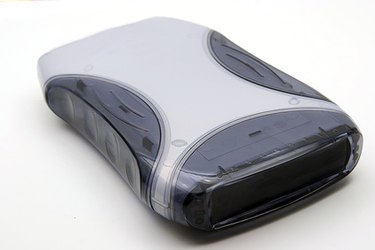
If you want to clear an external hard drive of everything on it, you will need to erase, or format, the drive. The first step is to make sure everything on the external hard drive is backed up, on another hard drive, a flash drive or a CD or DVD. Trying to recover items that have been deleted from a hard drive is not always possible.
Windows Operating Systems
Video of the Day
Step 1
Make sure the external hard drive is connected to the computer.
Video of the Day
Step 2
Log in to the computer as an administrator.
Step 3
Click "Start," then right-click "My Computer" and then click "Manage."
Step 4
Click "Disk Management."
Step 5
Right-click on the external drive you want to erase, for example the drive labeled "E" or "F." Click "Format."
Step 6
Assign a name to the external hard drive, such as "Backups," then click "OK."
Step 7
Click "OK" again at the Windows dialog prompt warning you that formatting the drive will erase all the data. Windows will then format the external drive and make it available for use again.
Macintosh Operating Systems
Step 1
Make sure the external hard drive is connected to the computer.
Step 2
Click on the "Applications" folder in the dock, then navigate to "Disk Utility" to start the program.
Step 3
Click on the external drive you want to erase; for example, the one labeled "Backups."
Step 4
Click on the "Erase" tab at the top, between the "First Aid" and "RAID" tabs. Leave the "Format" option at its default "Mac OS Extended" for typical hard drive formatting.
Step 5
Click on the "Erase" button at the bottom right. Click "Erase" again at the prompt warning you that erasing the disk will delete all its data. It will then erase the disk and make it available for use again.